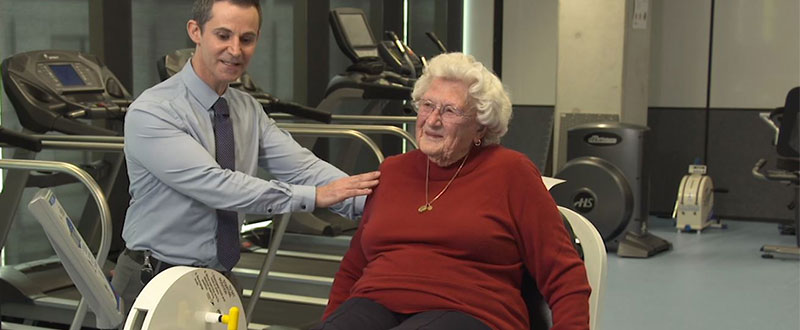
New evidence-based resources are helping clinicians prescribe progressive resistance training to reduce frailty and its risk factors for their patients and clients.
Evidence shows that physical activity leads to increased life expectancy and improved quality of life. A major recommendation of the Asia-Pacific Clinical Practice Guidelines for the Management of Frailty is to “prescribe physical activity with a resistance training component”.
A new suite of resources is now available to clinicians such as physiotherapists and exercise physiologists. The resources help ensure older people have access to progressive resistance training (PRT), which has been shown to:
- reduce the impact of frailty on older people
- help avoid hospitalisations
- be an effective treatment for depression, cognitive impairment, heart disease, diabetes, Parkinson’s disease, chronic lung disease, arthritis, osteoporosis, and many other chronic conditions common in older adults which contribute to frailty
- enable people to stay independent and live longer.
Produced by the Agency for Clinical Innovation’s (ACI’s) Frailty Taskforce, the progressive resistance training for frailty package includes:
- videos featuring people in their eighties and nineties demonstrating exercises and sharing the impact of PRT on their quality of life
- videos featuring clinicians discussing the benefits of PRT
- a guide for clinicians and evidence-based information on PRT prescription.
Sylvia McGregor shares her experiences and the benefits of resistance training.
Exercise is medication. To be effective, it needs to be prescribed at the right dosage.
The impact of progressive resistance training on frailty
Frailty is one of the most important reasons to prescribe resistance exercise, and should never be considered a barrier to robust, evidence-based exercise prescription. It can be safely delivered in home, hospital, and aged care settings, regardless of age or level of frailty.
PRT is the direct and only antidote to sarcopenia (the loss of muscle mass and strength related to ageing). It also offers functional, psychological, medical and cognitive benefits for older people living with frailty. People who have challenges with balance or cardiovascular endurance will also benefit from PRT, as it improves these capacities as well.
Health professionals are encouraged to refer people living with, or at risk of, frailty to qualified professionals who can ensure people receive the most appropriate exercise prescription at the right intensity.
I feel that the training has kept me walking, and kept me able to bend and do lots of jobs at home... I enjoy life.
Important things to remember about PRT
Proven to be safe and effective in hospital, community, and residential care settings.
Supervised programs achieve better outcomes than unsurpervised PRT.
Machines, free weights, bodyweight, and isometric exercise are all effective if at appropriate intensity.
Gains made from resistance training are not maintained once training stops, therefore people living with frailty and sarcopenia should be encouraged to permanently incorporate resistance training into their lives.
Dr Francis Burns demonstrates a bilateral chest press.
A collaborative approach
The ACI’s Frailty Taskforce brought together a working group of subject matter experts, including consumers, geriatricians, academics, physiotherapists, exercise physiologists and health service managers.
This working group developed the resources with consumer collaboration, guided by clinical expertise. The ACI’s Evidence team also provided rapid evidence checks to support the work.